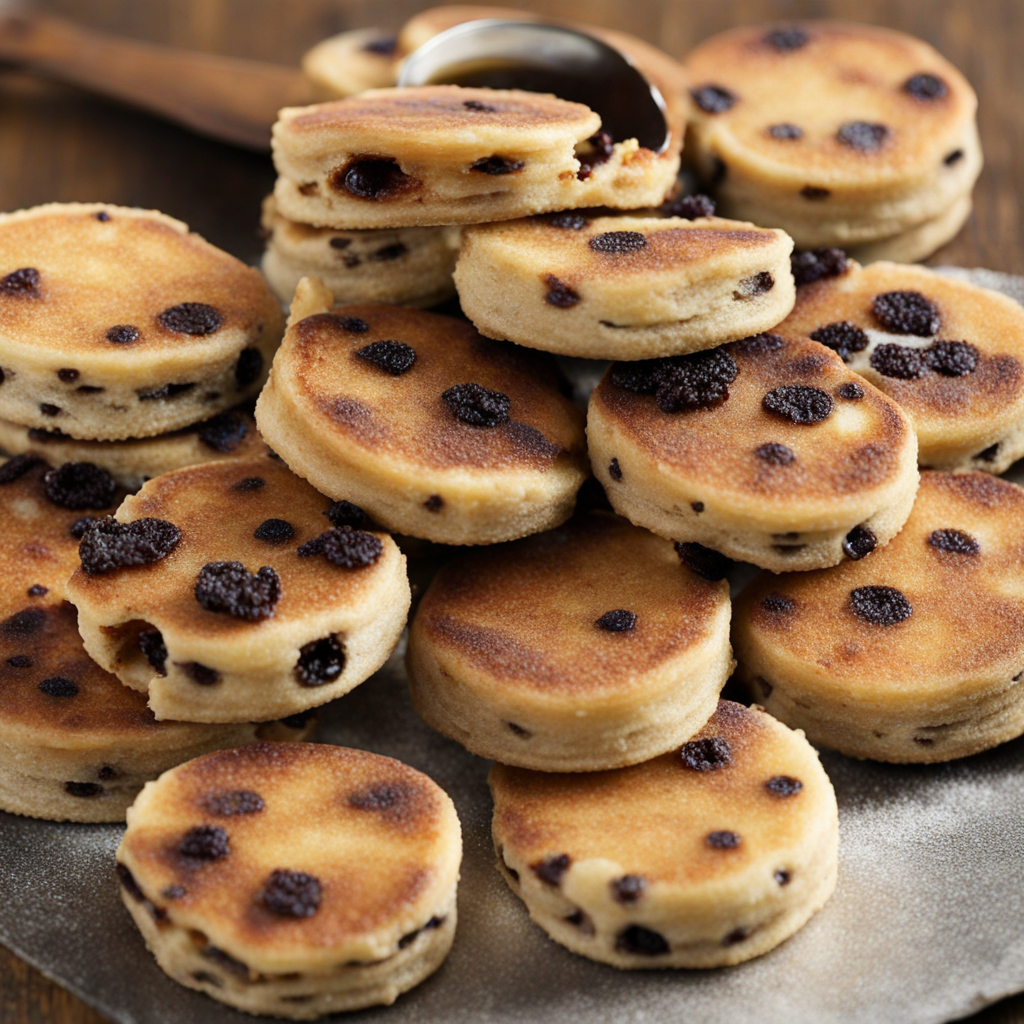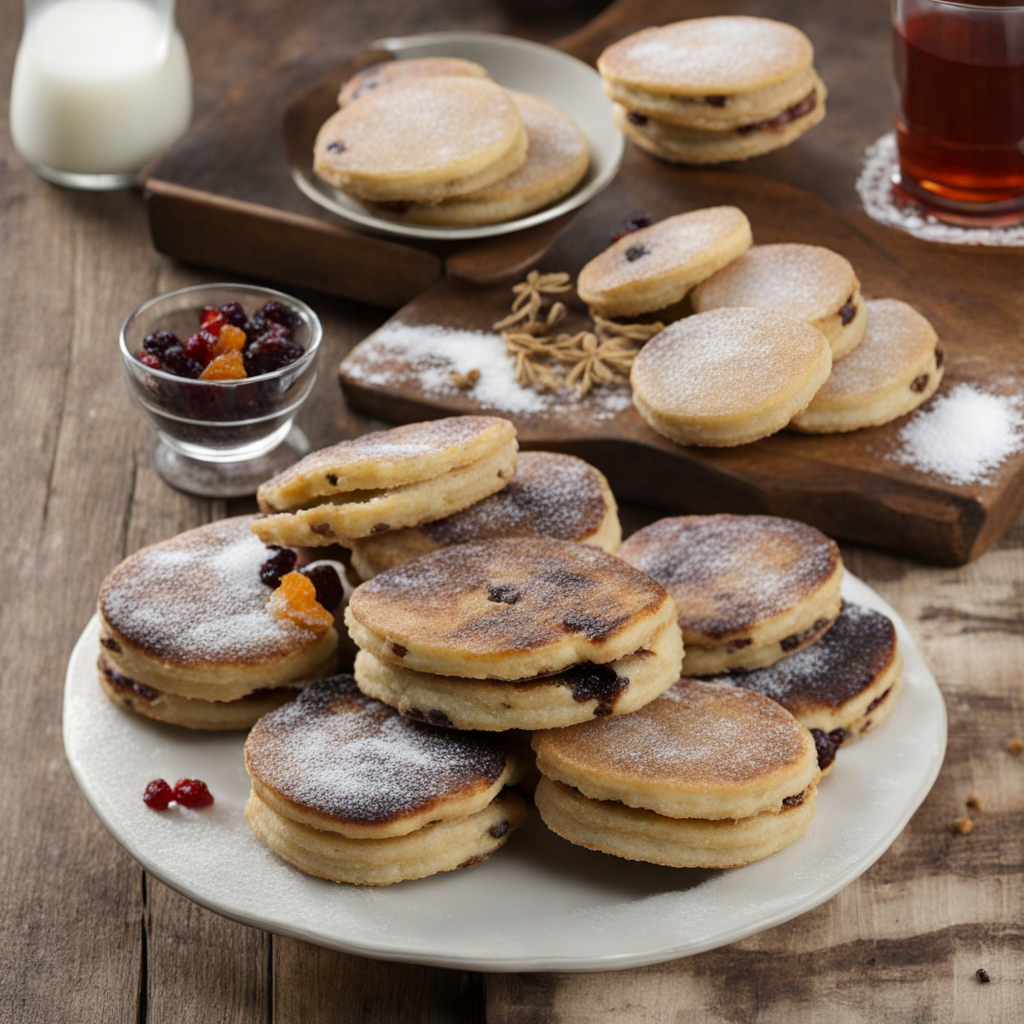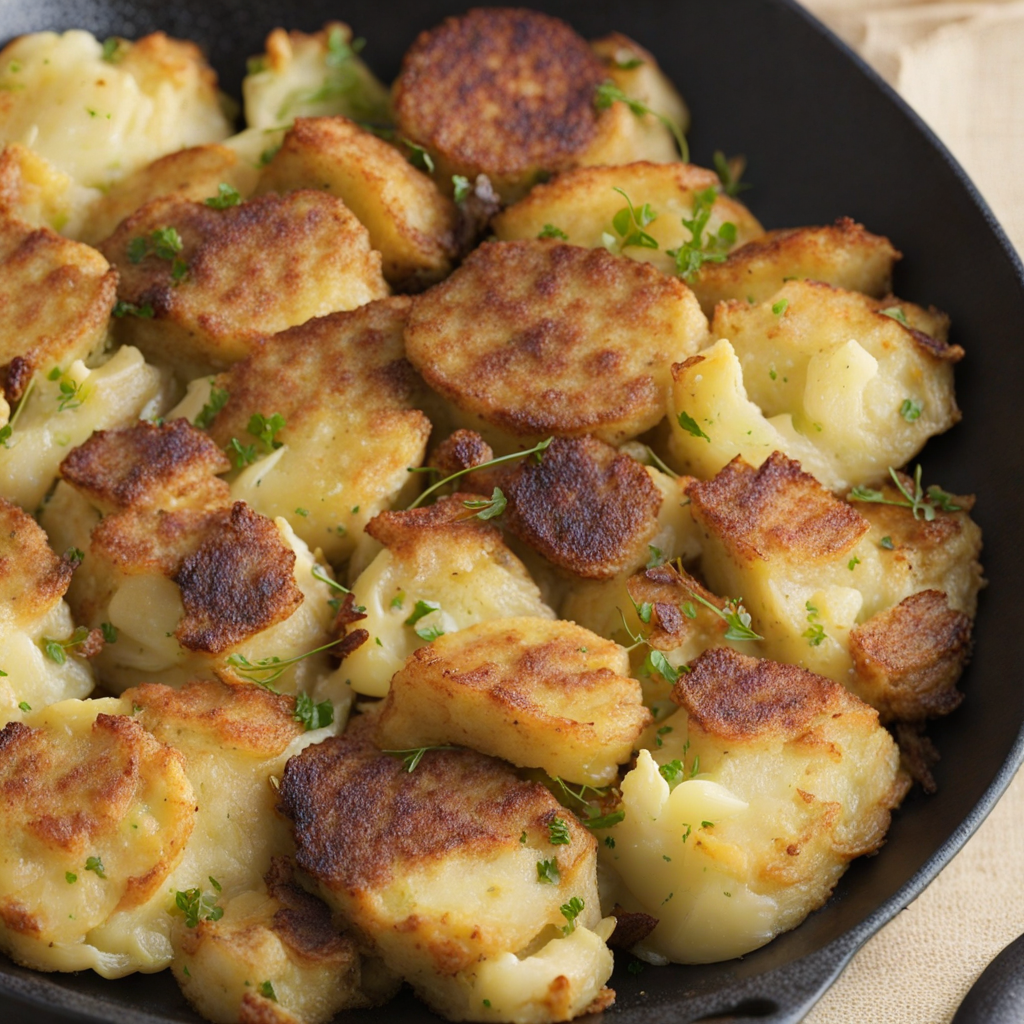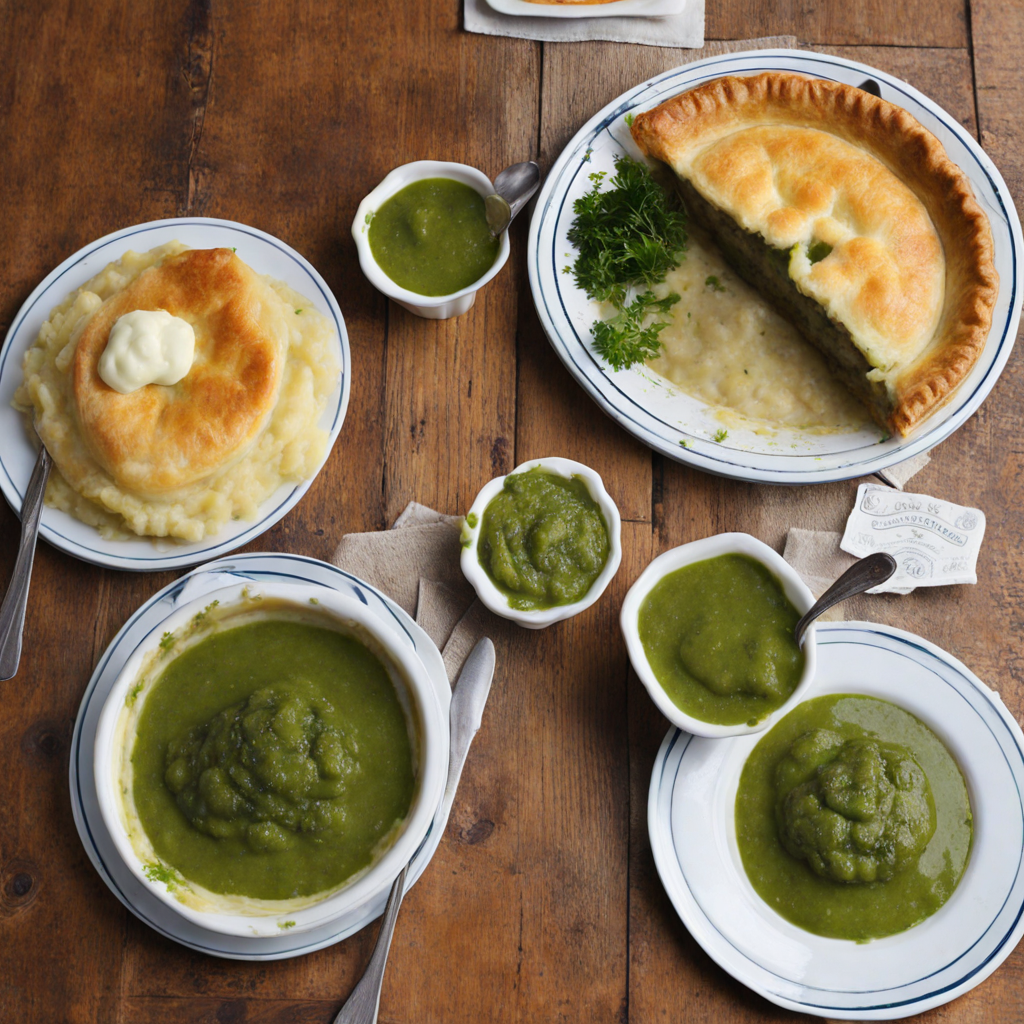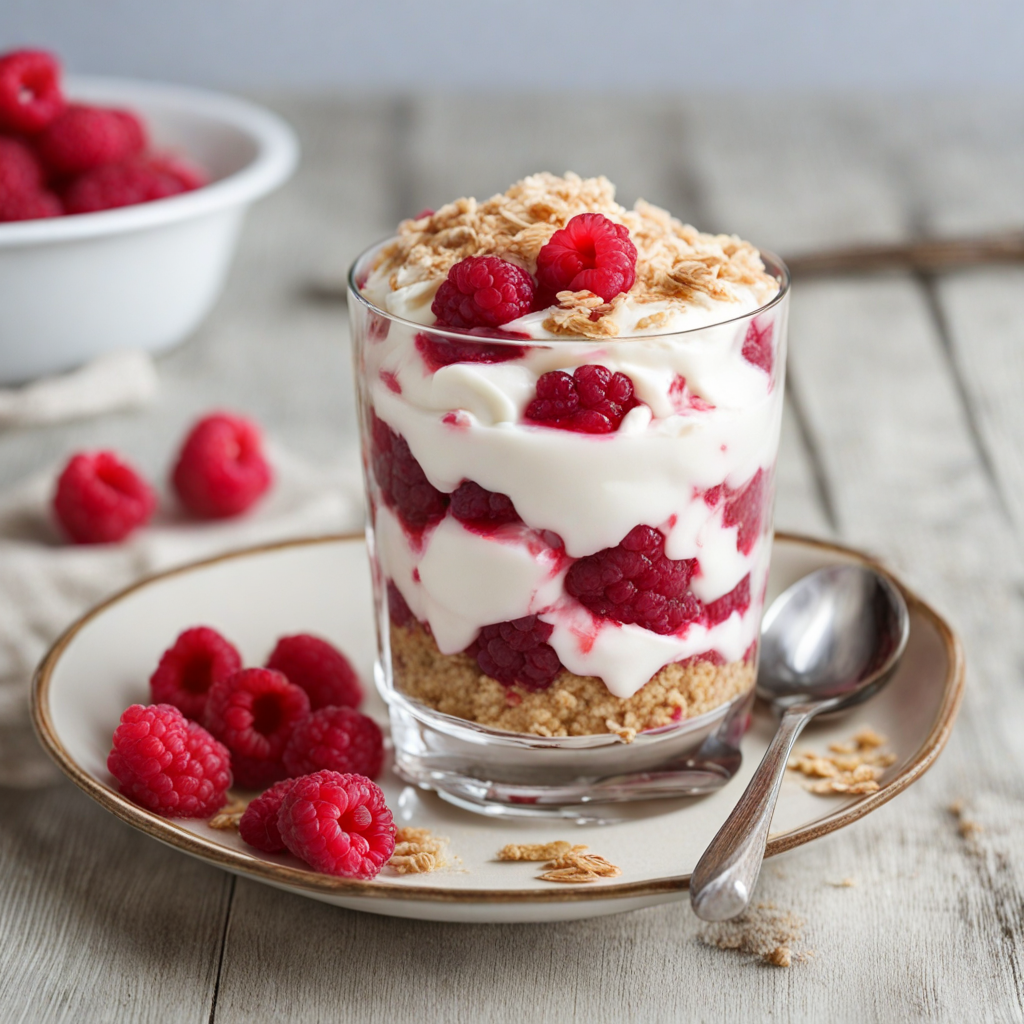Welsh Cakes
Welsh Cakes, also known as "pice ar y maen," are a delightful treat hailing from the United Kingdom, specifically the enchanting region of Wales. These small, round cakes are traditionally cooked on a griddle, giving them a unique texture that sits somewhere between a biscuit and a cake. Made with simple ingredients like flour, butter, sugar, and currants or raisins, Welsh Cakes are lightly spiced with nutmeg or cinnamon, which adds a warm, inviting aroma that wafts through the air as they cook. The result is a tender, slightly sweet pastry that’s both comforting and satisfying, perfect for enjoying with a cup of tea. The preparation of Welsh Cakes is a labor of love, as the dough is rolled out and cut into rounds before being cooked on a hot bakestone or griddle. This method gives them a lovely golden-brown crust while keeping the center soft and chewy. Once cooked, they are often sprinkled with a dusting of sugar, enhancing their sweetness and making them an irresistible snack. The addition of currants or raisins introduces bursts of fruity flavor, providing a delightful contrast to the rich buttery base. Each bite offers a perfect balance of sweetness and spice, making them a cherished treat for both young and old. Welsh Cakes are incredibly versatile and can be enjoyed at any time of the day. They are often served warm, straight from the griddle, but they also make a fantastic addition to picnics or as a packed lunch treat. Traditionally, they are enjoyed with a cup of tea, but they can also be paired with butter or jam for a more indulgent experience. Whether you’re seeking a taste of Welsh culture or simply craving a sweet snack, Welsh Cakes offer a charming and delicious way to explore new flavors from the United Kingdom.
How It Became This Dish
The Delicious Journey of Welsh Cakes: A Cultural Treasure of the United Kingdom #### Origins: A Culinary Heritage Welsh cakes, known as "pice ar y maen" in Welsh, are delightful, round, and flat pastries that have become a beloved treat in Wales and beyond. Their origins can be traced back to the 19th century, though some food historians speculate that similar cakes may have existed even earlier. Traditionally, these cakes were made on a bakestone, a flat stone slab used over an open fire, which was common in Welsh kitchens long before the advent of modern cooking appliances. The primary ingredients of Welsh cakes include flour, sugar, butter, baking powder, and currants or raisins. The dough is rolled out and cut into rounds before being cooked on the bakestone, which gives them a distinctive texture—crispy on the outside yet soft and moist inside. The use of local ingredients, such as the rich dairy products and fruits of Wales, played a significant role in their development, making them a delicious and accessible treat for families. #### Cultural Significance: A Symbol of Welsh Identity Welsh cakes hold a special place in the hearts of the Welsh people and are more than just a sweet treat; they embody a rich cultural heritage. They are often associated with traditional festivities and family gatherings, symbolizing hospitality and warmth. Served with a cup of tea, they have become a quintessential part of Welsh afternoon tea, making them a staple in homes across the region. The cakes are also significant during national celebrations and events. For example, on St. David's Day (Dydd Gŵyl Dewi Sant), the feast day of the patron saint of Wales, it is common for families to prepare Welsh cakes as part of the celebrations. This custom emphasizes the cake's connection to Welsh identity and pride, allowing people to celebrate their heritage through food. In addition, Welsh cakes have transcended regional boundaries, gaining popularity in other parts of the UK and even internationally. Their presence in bakeries and cafes has made them a staple on menus, appealing to both locals and tourists seeking an authentic taste of Wales. #### Development Over Time: From Home Baking to Modern Treat In the early 20th century, Welsh cakes were primarily made at home. Recipes were passed down through generations, often with regional variations in ingredients or cooking techniques. The simplicity of the recipe allowed for adaptability, and households would often personalize the cakes by adding spices like nutmeg or cinnamon, or different dried fruits, reflecting local tastes and preferences. As the 20th century progressed, industrialization and urbanization began to change the landscape of food production. While traditional home baking continued, the rise of commercial bakeries saw Welsh cakes being mass-produced, making them more accessible to the general public. This shift helped to preserve their popularity, but it also led to a decline in the traditional methods of preparation. The artisanal quality of homemade cakes was sometimes lost in the commercial versions, which often used preservatives and artificial flavorings. However, a resurgence of interest in traditional foods began in the late 20th century, spurred by the broader movement towards artisanal and locally sourced ingredients. Many home bakers and small-scale producers started to revive the original recipes and cooking techniques, emphasizing the importance of quality ingredients and traditional methods. This revival not only honored the history of Welsh cakes but also reinvigorated their status as a beloved staple of Welsh cuisine. #### Contemporary Appeal: A Global Trend Today, Welsh cakes are enjoyed by a diverse audience, both in Wales and around the world. Modern bakers have embraced innovative approaches, experimenting with flavors and ingredients to cater to contemporary palates while still respecting the traditional recipe. Variations now include options like chocolate chip Welsh cakes or gluten-free versions, appealing to a wider range of dietary preferences. The cakes have also found a place in the global food scene, often featured in British-themed cafes and restaurants around the world. Their unique flavor and texture make them a delightful addition to afternoon tea menus, where they are served alongside scones and other pastries. As part of the British culinary tradition, Welsh cakes have become a symbol of comfort and nostalgia, evoking memories of home and tradition for many. Moreover, social media has played a significant role in popularizing Welsh cakes among younger generations. Food bloggers and influencers share recipes, tips, and beautiful photographs of their creations, inspiring people to try making their own Welsh cakes at home. This digital renaissance has not only kept the traditional recipes alive but also fostered a community of enthusiasts who celebrate the joys of baking. #### Conclusion: A Timeless Treat Welsh cakes are more than just a delicious snack; they represent a rich tapestry of cultural heritage, family traditions, and regional pride. From their humble beginnings on bakestones in Welsh kitchens to their current status as a beloved treat enjoyed around the world, Welsh cakes have endured the test of time. They are a testament to the resilience of culinary traditions and the ability of food to connect people across generations and geographies. As we continue to celebrate and honor the culinary treasures of the past, Welsh cakes stand out as a symbol of Welsh identity and culture. They remind us of the importance of community, tradition, and the simple pleasures of sharing food with loved ones. Whether enjoyed with a cup of tea or as part of a festive celebration, Welsh cakes will undoubtedly continue to delight palates and warm hearts for generations to come.
You may like
Discover local flavors from United Kingdom


